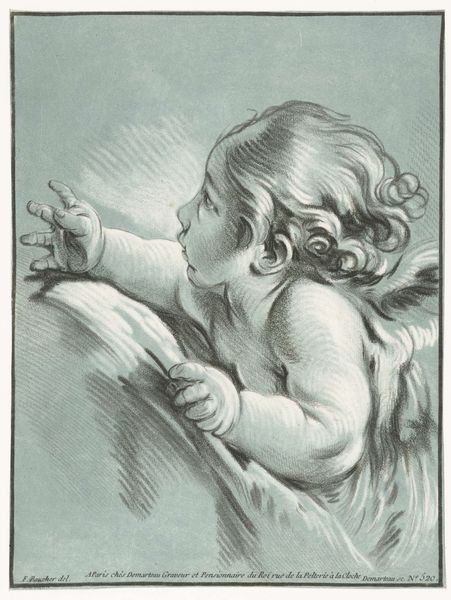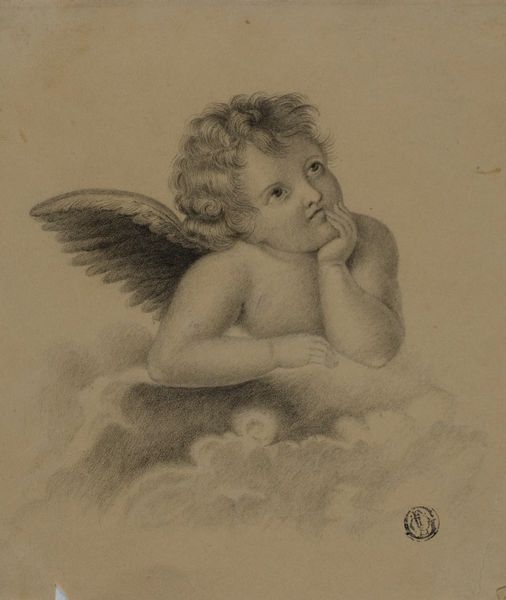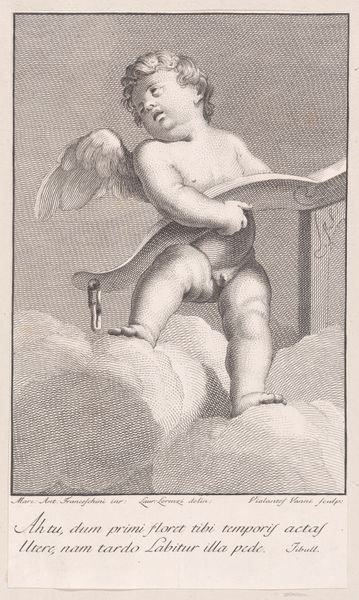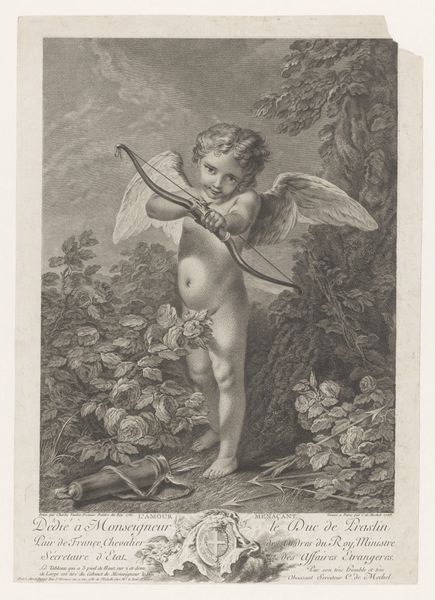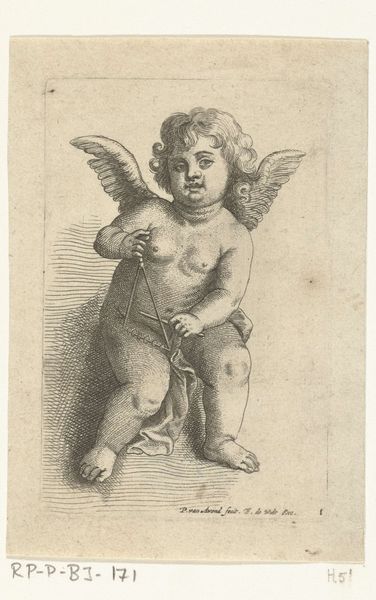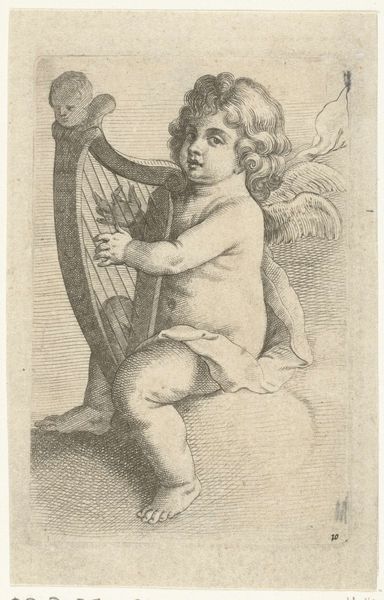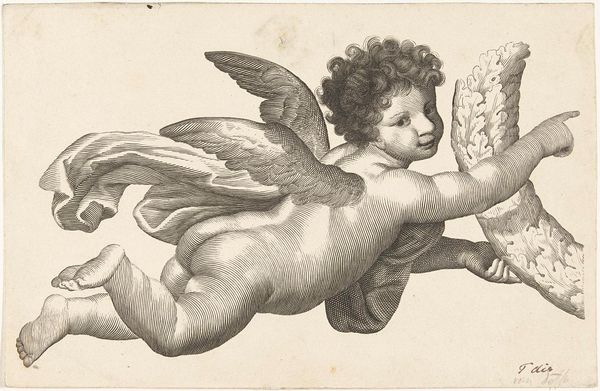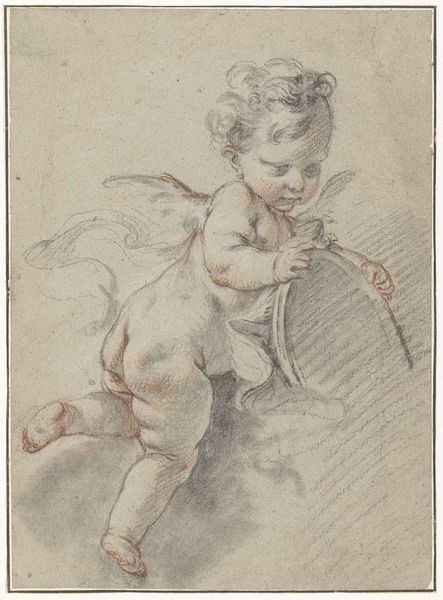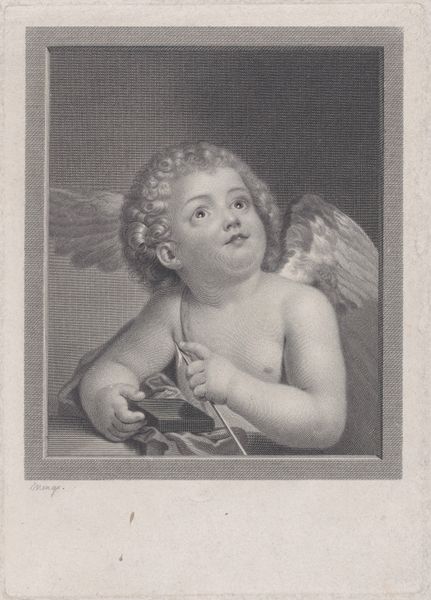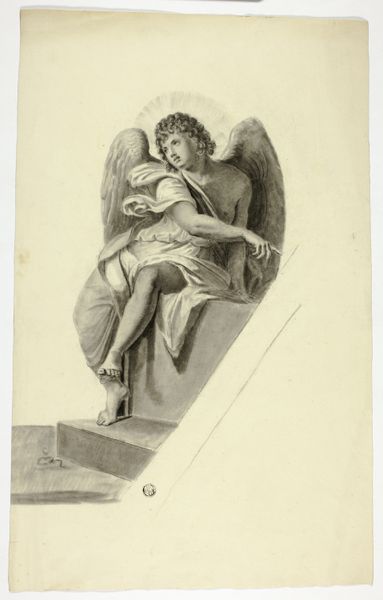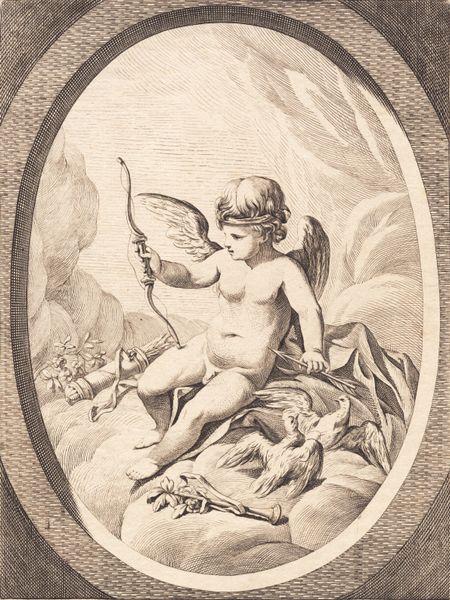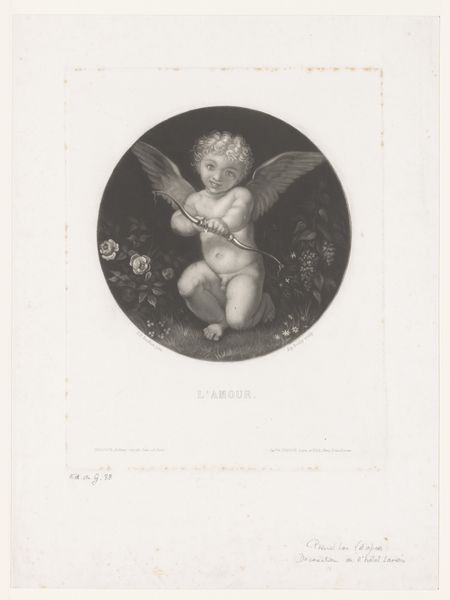
drawing, pastel
#
drawing
#
figuration
#
pastel
#
nude
#
rococo
Dimensions: height 252 mm, width 189 mm
Copyright: Rijks Museum: Open Domain
This "Putto" print was made by Gilles Demarteau, and it encapsulates many aspects of 18th century France and the social conditions which informed artistic production at that time. The image creates meaning through the putto, a classical and religious reference which had become a popular symbol in Rococo art for love and innocence. The inscription mentions that Demarteau was an engraver and "Pensionnaire du Roi," meaning he was in the service of the King. The "Rue de la Feltere" references his location in Paris. This was a time when artistic success was tied to royal patronage and membership in institutions like the Académie Royale. Artists like Demarteau had to navigate the politics of imagery and taste, creating works that catered to the elite while also participating in the burgeoning print market. Understanding this artwork requires us to research the system of royal patronage, the role of the Académie, and the market for prints in 18th century Paris. These social and institutional contexts are crucial to interpreting the image and its place in history.
Comments
No comments
Be the first to comment and join the conversation on the ultimate creative platform.
